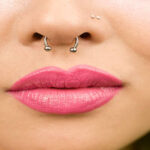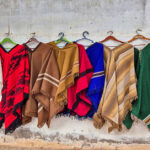Nose piercing has become one of the most popular forms of body modification worldwide. From its origins in ancient cultures to contemporary fashion statements, nose piercings reflect both aesthetic appeal and cultural significance. This article delves deeply into the history, types, healing process, care tips, risks, and jewelry options for nose piercings, providing a comprehensive resource for anyone considering or already having one.
1. History and Cultural Significance of Nose Piercing
Nose piercings are not just a modern trend; they have deep roots in history. In South Asia, particularly in India and Nepal, nose piercings have been worn for centuries as a symbol of marriage, social status, or religious significance. The piercing typically occurs on the left nostril, as it is believed in Ayurvedic medicine that the left side of the body is associated with reproductive health.
In ancient Middle Eastern cultures, nose rings were often used as a form of wealth display. African tribes, including the Berbers and Beja, have also traditionally used nose piercings to signify tribal identity, wealth, or personal milestones. In Western societies, nose piercings gained popularity in the 20th century, largely influenced by counterculture movements, rock music, and later, fashion trends. Today, it is largely seen as a form of self-expression and personal style.
2. Types of Nose Piercing
Nose piercings come in various styles depending on the placement and type of jewelry used. Understanding these types can help individuals choose a style that suits their facial structure, lifestyle, and aesthetic preference.
| Type of Piercing | Description | Healing Time | Popular Jewelry |
|---|---|---|---|
| Nostril Piercing | Piercing through the side of the nostril. Most common type. | 2–4 months | Studs, hoops, L-shaped pins |
| Septum Piercing | Piercing through the tissue between nostrils. | 6–8 weeks | Circular barbells, horseshoe rings |
| Bridge Piercing | Horizontal piercing through the upper nose bridge. | 8–12 weeks | Straight barbells |
| Nasallang Piercing | Horizontal piercing through both nostrils and septum. | 3–6 months | Straight barbells |
| High Nostril Piercing | Piercing higher up on the nostril. | 4–6 months | Studs, hoops |
| Rhino Piercing | Piercing at the tip of the nose cartilage. | 3–5 months | Small studs, gems |
Each type has different levels of pain, healing time, and care requirements. Choosing the right piercing is crucial, considering both your anatomy and lifestyle.
3. Jewelry Options for Nose Piercing
The type of jewelry used in nose piercings plays a significant role in healing, comfort, and aesthetic appeal.
3.1. Studs
Studs are small, discreet pieces of jewelry with a flat or decorative end. They are ideal for first-time piercings because they are less likely to get caught on clothing and are generally more comfortable during the healing process.
3.2. Hoops and Rings
Hoops provide a stylish and versatile look. They can be circular, semi-circular, or segment hoops. However, hoops may increase the risk of irritation if the piercing is still healing.
3.3. L-Shaped Pins
These pins are easy to insert and secure, making them suitable for new piercings. They have a right-angle bend, reducing the risk of rotation in the piercing hole.
3.4. Circular Barbells
Circular barbells are often used for septum piercings and allow for flexible styling. They are shaped like a horseshoe and can hold decorative beads at both ends.
3.5. Gem-Studded Jewelry
Gem studs or nose pins are decorative and add a fashionable element to the piercing. However, they require careful cleaning to avoid bacterial buildup around the gem.
4. The Nose Piercing Procedure
Getting a nose piercing involves several steps to ensure safety, hygiene, and minimal discomfort. The procedure is typically quick but requires attention to detail to prevent infections or complications.
Step 1: Consultation
A professional piercer assesses your anatomy, skin type, and overall health. They discuss jewelry options, placement, and healing expectations.
Step 2: Preparation and Sterilization
The area is cleaned with an antiseptic solution. The piercer uses sterilized needles and equipment. Gloves and other protective measures ensure a hygienic environment.
Step 3: Marking
The piercing site is marked using a non-permanent surgical marker. This ensures proper placement and symmetry.
Step 4: Piercing
A sterilized needle is carefully inserted through the marked spot. Some piercers use a clamp to stabilize the skin, while others use freehand techniques. The jewelry is immediately inserted into the new piercing.
Step 5: Aftercare Instructions
The piercer provides detailed care instructions, including cleaning routines, avoiding touching, and monitoring for signs of infection.
5. Healing Process and Care Tips
Proper aftercare is critical to avoid infections, irritation, and prolonged healing.
| Stage | Care Tips | Common Issues |
|---|---|---|
| First Week | Clean twice daily with saline solution, avoid touching or rotating jewelry. | Swelling, mild pain, redness |
| Weeks 2–4 | Continue cleaning, avoid makeup or creams near piercing. | Minor crust formation, slight tenderness |
| Months 1–3 | Avoid trauma, excessive sun, or swimming in pools. | Slow healing or irritation |
| Months 4–6 | Jewelry changes only after full healing. | Scarring if irritated or removed prematurely |
General Tips:
- Wash hands before touching the piercing.
- Avoid harsh chemicals or alcohol-based products.
- Sleep on your back to reduce pressure on nostrils.
- Use non-alcoholic saline sprays to clean the area gently.
6. Risks and Complications
While nose piercings are generally safe when done professionally, certain risks exist:
- Infection: Bacterial contamination can lead to redness, swelling, and pus formation.
- Allergic Reactions: Some metals, especially nickel, can cause skin irritation.
- Keloids and Scarring: Some individuals are prone to excessive tissue growth around the piercing.
- Migration or Rejection: The body may push out the jewelry, causing asymmetry or closure.
- Nerve Damage: Rare but possible, especially with deep or incorrectly placed piercings.
Using high-quality jewelry, following aftercare instructions, and choosing an experienced piercer significantly reduce these risks.
7. Pain Level and Sensation
Pain is subjective, but generally, nostril piercings are moderately painful due to cartilage thickness, while septum piercings may feel sharper but are short-lived. The initial piercing may sting for a few seconds, followed by mild swelling or tenderness for several days. Over-the-counter pain relief can help manage discomfort during the early healing stages.
8. Nose Piercing Trends and Fashion
Nose piercings have evolved from traditional symbols to global fashion trends. Celebrities, influencers, and fashion icons have popularized styles like studs, septum rings, and elaborate chains connecting multiple piercings.
Popular Trends:
- Minimalist studs for a subtle look.
- Septum clickers for a bold statement.
- Gem-studded nose pins for weddings and special occasions.
- Double nostril piercings or high nostril placements for layered styles.
The versatility of nose piercings allows individuals to express their personality while following contemporary fashion trends.
9. Cost of Nose Piercing
The cost of a nose piercing depends on factors such as location, jewelry quality, and the piercer’s experience. Generally:
| Region | Average Cost (USD) | Notes |
|---|---|---|
| North America | $30–$80 | Includes jewelry and sterilization |
| Europe | €25–€70 | Prices vary by city and studio |
| Asia | $10–$50 | Traditional studios may charge less |
| Online Jewelry Only | $5–$20 | Does not include professional piercing |
It’s recommended not to compromise on safety for price, as a poorly done piercing can result in long-term issues.
10. Long-Term Care and Maintenance
Once fully healed, nose piercings require minimal maintenance but should still be cleaned occasionally to prevent buildup.
- Remove and clean jewelry every few months.
- Avoid harsh chemicals or perfumes around the piercing.
- Monitor for late-onset infections or allergic reactions.
- Consider high-quality metals like surgical steel, titanium, or 14k gold to minimize irritation.
With proper care, nose piercings can last a lifetime and remain stylish.
11. Conclusion
Nose piercing is a beautiful and meaningful form of self-expression with deep historical roots and modern appeal. Choosing the right type, following proper hygiene practices, and understanding potential risks are essential for a successful and safe piercing. From simple nostril studs to elaborate septum rings, nose piercings offer versatility, fashionability, and personal significance. By following professional guidance and aftercare routines, individuals can enjoy a stylish and safe piercing for years to come.
FAQs
1. How long does a nose piercing take to heal?
Most nostril piercings heal in 2–4 months, while septum piercings may take 6–8 weeks. Healing time varies by individual.
2. Can I change my nose jewelry before it heals?
No, changing jewelry before full healing can cause infections, irritation, or rejection. Always wait until completely healed.
3. Is nose piercing painful?
Pain is generally mild to moderate and lasts a few seconds during piercing, followed by minor swelling or tenderness.
4. How do I prevent infections in a nose piercing?
Clean the piercing twice daily with saline solution, avoid touching with dirty hands, and use high-quality jewelry.
5. Can I have multiple nose piercings?
Yes, multiple nostril or combination piercings are possible, but each piercing should be healed before adding another.











